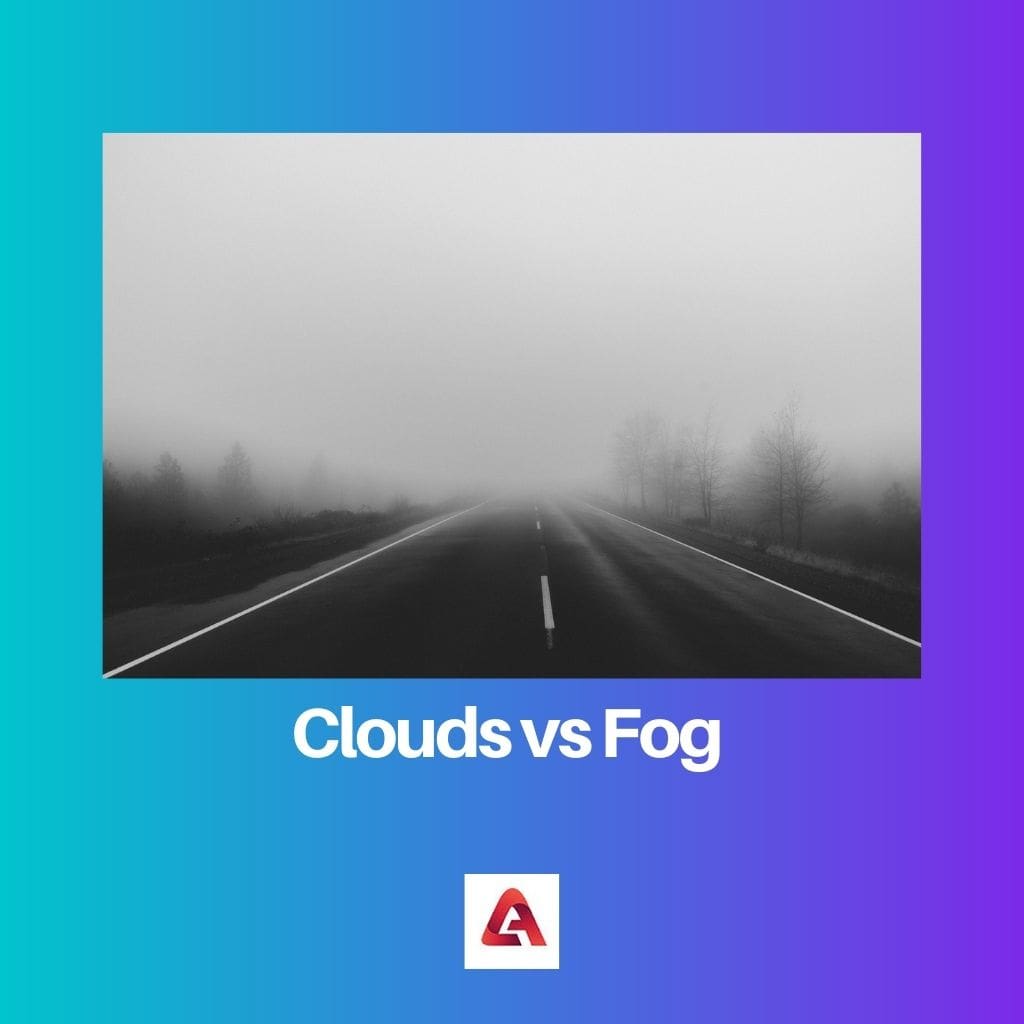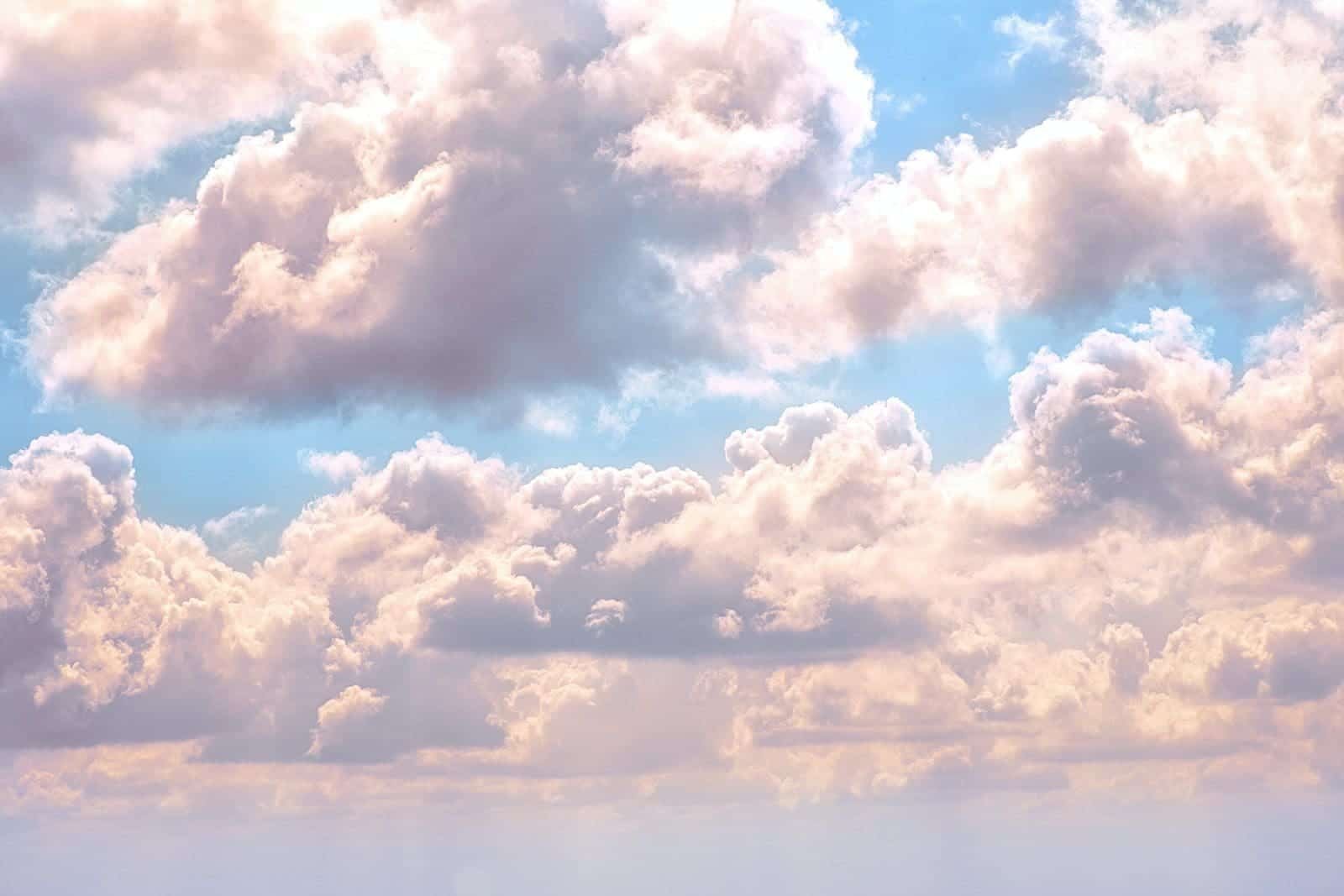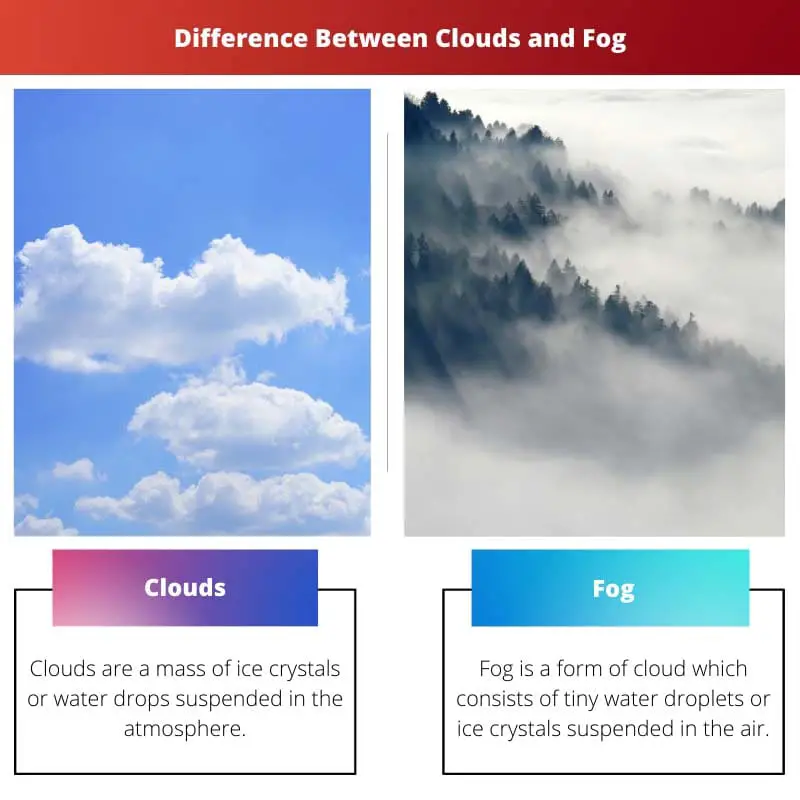Whenever we look at the sky, we see a white cotton-like thing scattered in the sky that looks marvelously beautiful, and this beautiful thing is known as Cloud. Clouds are an important part of the water cycle.
These clouds can form at different altitudes. They can be high as 20 km above sea level and even low as the ground. So, the form of cloud, which is low as the ground, is known as fog. Fogs appear in the winter season and restrict our vision.
Key Takeaways
- Clouds are visible masses of water droplets or ice crystals suspended in the atmosphere, at high altitudes.
- Fog is a low-lying cloud that forms close to the Earth’s surface, reducing visibility and creating a misty appearance.
- Although both clouds and fog consist of condensed water vapor, their primary difference lies in their altitude and resulting impact on visibility.
Clouds vs. Fog
The difference between fog and clouds is that Clouds form when the water vapor (a gaseous form of water) turns into liquid and forms on tiny particles like dust. In contrast, fog is formed when the air near the ground cools enough to turn its water vapor into liquid water or ice.

Also, clouds can form at any altitude and are present in any climate, whereas fog can only form at ground level and are present during cold climatic conditions only.
Comparison Table
| Parameter of Comparison | Clouds | Fog |
|---|---|---|
| Altitude | Clouds are present at any altitude. | Fog is present at ground level only. |
| Significance | Clouds are significant because they contribute to the water cycle. | Fog is not so significant. |
| Existence | Throughout the year. | Winters only. |
| density | 0.5g/m3 | 0.05g/m3 – 0.5g/m3 |
| Occurrence of condensation | Condensation occurs high in the atmosphere. | Condensation occurs close to the ground. |
| Precipitation of Water back | Clouds precipitate water back in the form of rain. | Fog doesn’t precipitate water back. |
What are Clouds?
Clouds are a mass of ice crystals or water drops suspended in the atmosphere. They are an important part of the water cycle. They also contribute to Earth’s weather and climate. There are 10 types of clouds classified into 3 different levels:
- High-Level Clouds: There are three high-level clouds:
- Cirrus(Ci): These clouds appear like white patches in the sky. Cirrus comprises ice crystals that appear bright yellow or red before sunrise and after sunset.
- Cirrocumulus(Cc): This cloud is like a thin white patch or sheet layered in the sky without shading. They appear as small elements arranged randomly.
- Cirrostratus(Cs): This type of cloud is more transparent than a white veil or a sheet of white butter paper. It is not opaque enough to block sun rays.
- Mid-Level Clouds: There are three types of mid-level clouds:
- Altocumulus (Ac): They have a grey and white patch-like or layered sheet-like appearance. Most of the small elements arranged in this type of cloud constitute a little finger’s width.
- Altostratus (As): They are somewhat greyish-bluish sheets or layers covering the sky totally or partially. They are translucent.
- Nimbostratus (Ns): These are dark grey-colored cloud layer that gets diffused by falling rain or snow. They are opaque and don’t allow sunlight to pass through them.
- Low-Level Clouds: There are four types of low-level clouds:
- Cumulus (Cu): There are dense clouds with sharp outlines that develop into towers and buildings.
- Cumulonimbus (Cb): This is the thunderstorm cloud. It is huge, dense, and appears like a mountain.
- Stratocumulus (Sc): These are grey or whitish-colored patch or sheet-like layered clouds with a dark honeycomb-like appearance.
- Stratus (St): These are grey clouds with a uniform and dense layer. They produce ice prisms, snow grains, etc.
Clouds are formed when water from the ground or any water body evaporates as water vapor by trapping the heat and leaving the water behind them cooler.
Then this water vapor forms on the dust particles in the air, forming water drops by condensation, and such water drops combine to form clouds.

What is Fog?
Fog is a cloud consisting of tiny water droplets or ice crystals suspended in the air near the earth’s surface, and water bodies, climate, etc influence it.
There are 8 types of fog present, they are:
- Radiation Fog: This fog forms when no solar energy is on the earth’s surface, and the temperature can meet the dew point.
- Precipitation Fog: This fog forms in the rain and cold air. This is common with warm fronts, but it occurs with cold fronts as well.
- Advection Fog: This fog forms in windy conditions, that is, due to contact of horizontal winds with the surface.
- Steam Fog: This fog is common in lakes and occurs in autumn.
- Upslope Fog: This fog forms when the sinking air warms up, and the rising air cools down.
- Valley Fog: It forms in the valley in the moist soil due to previous rainfall. It is also known as tule fog.
- Freezing Fog occurs when the temperature is less than 0℃ or below. The tiny droplets in this fog freeze around the object when they come in contact.
- Ice Fog: This fog is present only in cold regions like polar and arctic regions with less than -10℃.
Fog is formed when the water vapor formed during evaporation condenses at ground level because of cool air.

Main Differences Between Clouds and Fog
- Clouds form when condensation takes place at a high altitude, whereas fog is formed when condensation occurs at ground level. Clouds may be present at any altitude, but fog is only at ground level.
- Clouds are significant because they contribute to the water cycle, whereas fog isn’t so significant.
- Clouds are present throughout the year and in all places, whereas fog is present only in the winter and cold seasons.
- The density of clouds is 0.5g/m3, whereas the density of fog is 0.5g/m3- 0.05g/m3.
- Clouds precipitate the absorbed water back to the earth as rain, but the fog doesn’t precipitate.

- https://link.springer.com/article/10.1023/A:1006611609450
- https://www.researchgate.net/profile/Tobias_Hossfeld/publication/235437099_FoG_and_Clouds_Optimizing_QoE_for_YouTube/links/5444eff80cf2e6f0c0fbf624.pdf

The explanation of cloud formation and fog types was very detailed and insightful. Really enjoyed reading this!
Agreed. It was very informative.
Absolutely, it was a well-explained piece.
This content is valuable and provides a wealth of information on cloud and fog. The depth of detail makes it very engaging.
It’s always great to come across well-researched content like this.
I agree, the level of detail was impressive.
The content seems to be well-researched and really puts emphasis on the importance of clouds and fog in the water cycle. Great article!
It’s great to see such detailed information about clouds and fog in one place.
Agreed! I learned a lot from this article.
This article provided detailed information on cloud formation and the different types of clouds. The explanation was very clear and easy to understand.
Absolutely, it was very informative and well explained.
This article has provided a comprehensive comparison of clouds and fog, making it easy to understand the difference between the two.
I found the comparison table particularly helpful.
This article has given me a better understanding of the science behind cloud and fog formation. Great read!
I agree, it was enlightening.
The author has done an excellent job of explaining the different types of clouds and fog. The comparison table was very useful.
I appreciated the comparison table too.
It definitely helped in understanding the unique characteristics of each.
The detailed explanation on the formation of clouds and fog and the types was fantastic. Looking forward to more content like this.
Absolutely, an excellent piece of educational content.
Perhaps the article could also include some predictions on the future of cloud and fog behaviors regarding climate change. That would make it even better.
That could be an interesting addition.
Agreed. It would add more depth to the article.
The detailed types of fog explained here have given me a complete understanding of its behavior. Very educational.
Absolutely, the article was quite enlightening.